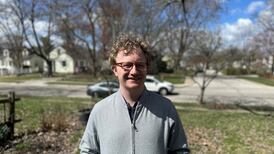Energy. If you don't have it where and when you need it, you could soon be in trouble. Trinity scientist Prof Valeria Nicolosi reckons that we could store that precious energy much more effectively in devices if we go ultra-thin.
She's exploring how atom-thick sheets of "two-dimensional" nanomaterials could be used to make more efficient supercapacitors that can store and release energy. And this week she's off to a World Economic Forum event to present her research at the Annual Meeting of the New Champions 2013 in Dalian in China.
So why does an economic and business gathering need to hear about ultra-thin materials? "We need alternative – and better – ways of storing energy," says Prof Nicolosi, who is a European Research Council research professor at the School of Chemistry, School of Physics and CRANN in Trinity College Dublin.
“We have sources of energy like solar and wind, but of course the sun doesn’t shine all day and the wind doesn’t blow each day in every single country, so we need to find better ways of storing this energy whenever it is available so we can use it whenever it is needed.”
Greater efficiency
She's looking to develop more efficient supercapacitors, or devices that can store and release energy. "We are surrounded by supercapacitors, we use them every day in conventional technologies like the exit doors on airplanes or small appliances at home," explains Prof Nicolosi.
“The current technology means that the supercapacitor can release energy very quickly when needed – like when you open the door of the aircraft or you turn on the home appliance. But it also means that not much energy can be stored. What I want to do is develop supercapacitors that can hold on to and release large amounts of charge efficiently.”
The key to more efficient energy storage could lie in using ultra-thin layers of nanomaterials that can act as good conductors, that are robust enough to withstand a bit of rough and tumble and that can offer a massive surface area, explains Prof Nicolosi.
“Graphene [atom-thick sheets of carbon] is the usual suspect for two-dimensional materials, but it is not the only one,” she explains. “There are hundreds of materials that can form two-dimensional layers, and the behaviours of these ultra-thin materials means there could be the potential to build devices that charge and discharge thousands of times over and still retain the same efficiency.”
But how do you get your mitts on such a thin material? In her research at Trinity, Nicolosi works with Prof Jonathan Coleman on the "liquid exfoliation" of atom-thick flakes of materials with useful properties.
“The advantage of this technique is that you can produce billions and billions of layers within hours,” explains Prof Nicolosi. “It’s a technique which can be scaled up, it doesn’t involve any heavy chemistry, it doesn’t involve particularly challenging protocols and yet it produces loads of these materials.”
Once they split out the nano-flakes – much like separating individual cards out from a deck – the researchers can then mix and match the materials, combining them to get the desired overall effects.
“We can spray these materials on large surfaces and stack different compounds one on top of the other,” says Prof Nicolosi. “So we can use the best quality of each material to get the final device to perform a certain way.”
Meeting of minds
Nicolosi says she was both surprised and honoured to be invited to the forum in China this week, which is expected to involve around 1,500 participants from more than 90 countries.
“The meeting puts a lot of emphasis on young entrepreneurs and industries and scientists,” she says.
“It will be about getting the vision from young people, discussing new ideas and trends and looking at how can they can be implemented and how this can impact the future economy.”
In Dalian, Nicolosi will be taking part as a European Research Council-funded researcher. “I am very much looking forward to the discussions with stakeholders and entrepreneurs and seeing what type of impact my research could have in the future,” she says.
















